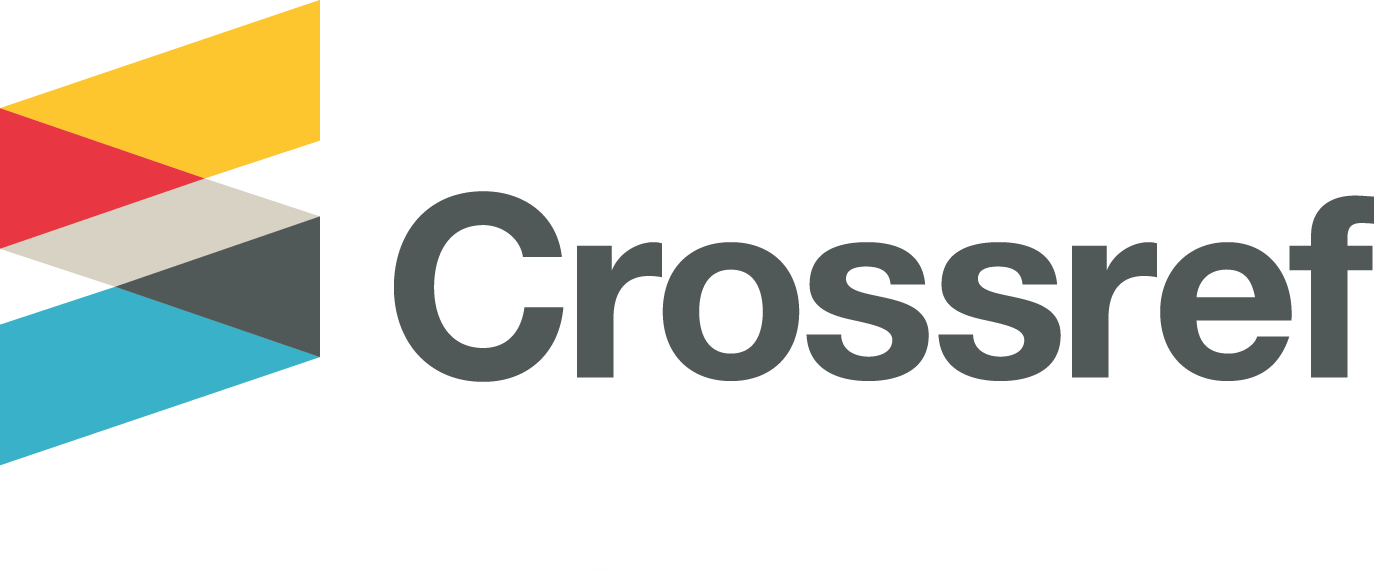Validity Test of Happiness at Work Construct Adaptation in Employees in Indonesia
Abstract
The construct of happiness at work is very important in research related to human resource management. Testing the reliability and construct validity of the happiness at work scale is important to measure and assess happiness at work in employees in Indonesia. This study aims to collect evidence of the validity of the internal structure of the Indonesian version of happiness at work. The study involved 297 active employees in private companies, state-owned enterprises, government agencies and other institutions in Indonesia, through online questionnaire completion. Data were analyzed using Confirmatory Factor Analysis (CFA) on a 31-item measuring instrument. Reliability of 31-items using Cronbach's Alpha is 0.949 with goodness of fit values (RMSEA 0.079, CFI 0.97 and NNFI 0.97) after modification. It can be concluded that the 31 favorable items can be used to measure happiness at work’s employees in Indonesia.
Konstruk happiness at work atau kebahagiaan di tempat kerja menjadi sangat penting dalam penelitian terkait manajemen sumber daya manusia. Pengujian reliabilitas dan validitas konstruk happiness at work scale ini menjadi penting untuk mengukur dan menilai happiness at work pada karyawan di Indonesia. Studi ini bertujuan untuk mengumpulkan bukti validitas struktur internal happiness at work versi Bahasa Indonesia. Penelitian ini melibatkan 297 karyawan aktif di perusahaan swasta, BUMN, instansi pemerintahan dan lembaga lainnya di Indonesia, melalui pengisian kuesioner secara daring. Analisis data menggunakan Confirmatory Factor Analysis (CFA) terhadap alat ukur 31-item. Reliabilitas 31-item menggunakan Cronbach’s Alpha sebesar 0.949 dengan nilai goodness of fit (RMSEA 0.079, CFI 0,97 dan NNFI 0,97) setelah di modifikasi. Maka dapat disimpulkan bahwa 31 favorable item dapat digunakan untuk mengukur happiness at work pada karyawan di Indonesia.
Keywords
Full Text:
FULL TEXTReferences
Andrew, S. S. (2011). S.M.I.L.E.S. 1 : The Differentiating Quotient for Happiness at Work. https://www.happiestminds.com/whitepapers/smiles-differentiating-quotient-for-happiness-at-work.pdf
Atrizka, D., Andriki, E., Melisa, M., & Natasya, N. (2021). Efek Kepuasan Kerja Dalam Mempengaruhi Komitmen Organisasi Karyawan. Psikoborneo: Jurnal Ilmiah Psikologi, 9(4), 811. https://doi.org/10.30872/psikoborneo.v9i4.6751
Brown, T. A. (2006). Confirmatory Factor Analysis for Applied Research. In D. A. Kenny (Ed.), The Guilford Press. The Guilford Press. https://doi.org/10.5860/choice.44-2769
Carr, A. (2004). Positive psychology: The science of happiness and human strengths. New York: BrunnerRoutledge.
Charles-Leija, H., Castro, C. G., Toledo, M., & Ballesteros-Valdés, R. (2023). Meaningful Work, Happiness at Work, and Turnover Intentions. International Journal of Environmental Research and Public Health, 20(4). https://doi.org/10.3390/ijerph20043565
Diener, E. (2000). Subjective well-being. America Psychologist, 55, 34-43.
Fadli, A., Adriansyah, M. A., & Nur Rahmah, D. D. (2022). Kepuasan Kerja dengan Intensi Turnover Pada Karyawan. Psikoborneo: Jurnal Ilmiah Psikologi, 10(1), 23. https://doi.org/10.30872/psikoborneo.v10i1.6996
Field, A. (2005). Discovering Statictic Using SPSS. Sage Publication Ltd.
Fisher, C. D. (2010). Happiness at Work. International Journal of Management Reviews, 12(4), 384–412. https://doi.org/10.1111/j.1468-2370.2009.00270.x
ITC, I. T. C. (2017). ITC Guidelines for Translating and Adapting Tests (Second Edition). International Journal of Testing, 1–34. https://doi.org/10.1080/15305058.2017.1398166
Kahn, W. A. (1990). Psychological conditions of personal engagement and disengagement at work. Academy of Management Journal, 33(4), 692–724.
Kaplan, R. M., & Saccuzo. (2005). Psychological Testing: Principles, Applications, and Issues Sixth Edition (6th ed.). Belmont: Thomson Wadsworth.
Locke, E. A. (1976). The nature and causes of job satisfaction. In M. D. Dunette (Ed.), Handbook ofindustrial and organizational psychology (pp. 1297–1343). Chicago, IL: Rand McNally.
Lutterbie, S., & J. Pryce-Jones. (2013). Measuring Happiness at Work: BPS - iOpener Institute. https://iopenerinstitute.com/measuring-happiness-work-bps/
Meyer, J. P., & Allen, N. J. (1996). Affective, continuance, and normative commitment to the organization: an examination of construct validity. Journal of Vocational Behavior, 49(3), 252–276. http://www.ncbi.nlm.nih.gov/pubmed/8980084
Misra, N., & Srivastava, S. (2022). Happiness at Work: A Psychological Perspective. Happiness and Wellness: Biopsychosocial and Anthropological Perspectives [Working Title]. https://doi.org/10.5772/intechopen.108241
Novliadi, F., & Anggraini, R. (2020). Happiness at work viewed from job satisfaction and perceived organizational support. ICOSTEERR 2018 - International Conference of Science, Technology, Engineering, Environmental and Ramification Researches, 7, 1815–1820. https://doi.org/10.5220/0010102318151820
Novrizaldi. (2021, May 27). Jelang Bonus Demografi, Pemerintah Fokus Buka Lapangan Pekerjaan. Kementerian Koordinator Bidang Pembangunan Manusia Dan Kebudayaan Republik Indonesia. https://www.kemenkopmk.go.id/jelang-bonus-demografi-pemerintah-fokus-buka-lapangan-pekerjaan
Pabisa, Y. (2019). Pengarhuh Antara Lingkungan Kerja dan Shift Kerja Terhadap Kinerja Karyawan. Psikoborneo: Jurnal Ilmiah Psikologi, 7(2), 294–301. https://doi.org/10.30872/psikoborneo.v7i2.4785
Pryce-Jones, J. (2010). Happiness at work: maximizing your psychological capital for success. In John Wiley & Sons Ltd. https://doi.org/10.1108/00251741111143676
Rastogi, M. (2019). A psychometric validation of the happiness at workplace scale. Industrial and Commercial Training, 15(1), 15–34. https://doi.org/10.1108/ICT-04-2019-0034
Salas-Vallina, A., & Alegre, J. (2018). Happiness at work: Developing a shorter measure. Journal of Management and Organization, 1–21. https://doi.org/10.1017/jmo.2018.24
Salas-Vallina, A., Alegre Vidal, J., & Fernandez, R. (2017). On the road to happiness at work (HAW): transformational leadership, organizational learning capability and happiness at work. Personnel Review, 46(2), 314–338. https://doi.org/10.1108/00483481011075611
Singh, S., & Aggarwal, Y. (2017). Happiness at Work Scale: Construction and Psychometric Validation of a Measure Using Mixed Method Approach. Journal of Happiness Studies, 19(5), 1439–1463. https://doi.org/10.1007/s10902-017-9882-x
Sumintono, B., & Widhiarso, W. (2014). Aplikasi Model Rasch Untuk Penelitian Ilmu-Ilmu Sosial (Edisi Revisi). Trim Komunikata Publishing House. https://eprints.um.edu.my/11413/1/Model_rasch_edisi_revisi_sampel_buku.pdf
DOI: http://dx.doi.org/10.30872/psikoborneo.v11i1.10384
Refbacks
- There are currently no refbacks.
Copyright (c) 2023 Psikoborneo: Jurnal Ilmiah Psikologi

This work is licensed under a Creative Commons Attribution-ShareAlike 4.0 International License.
PSIKOBORNEO: Jurnal Ilmiah Psikologi Published by Faculty of Social and Political Siences, University of Mulawarman, Samarinda, East Kalimantan and This work is licensed under a Creative Commons Attribution-ShareAlike 4.0 International License.
________________________________________
PSIKOBORNEO: Jurnal Ilmiah Psikologi
Department of Psychology
Faculty of Social and Political Siences, University of Mulawarman
Jl. Muara Muntai Kampus Gn. Kelua Samarinda 75411
Phone: +62 813 35350368
E-Mail: psikoborneo@gmail.com / psikoborneo@fisip.unmul.ac.id
















